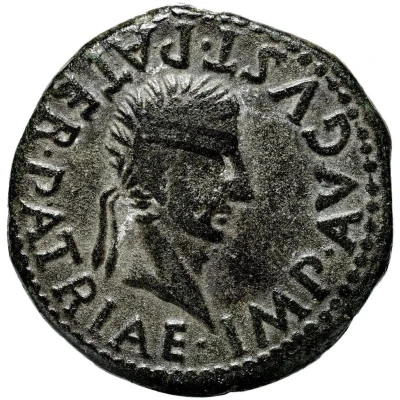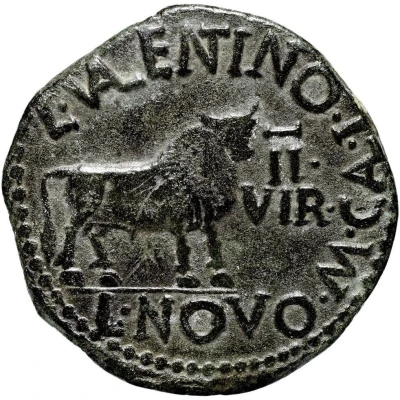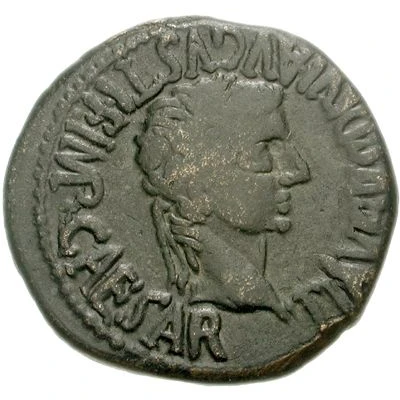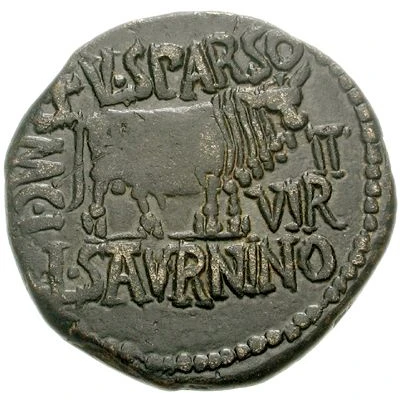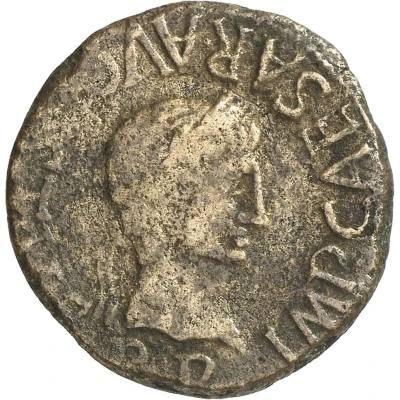
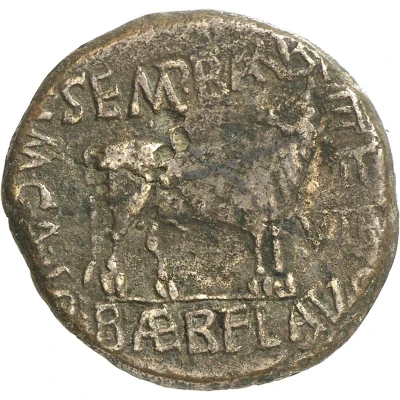

© Münzkabinett - Staatliche Museen zu Berlin (CC BY-SA 4.0)
As - Augustus M CAL I C SEMP BARBA III Q BAEB FLAVO II VIR 2 BC - 14 AD
| Copper | 8.3 g | 28 mm |
| Issuer | Calagurris (Tarraconensis) |
|---|---|
| Emperor | Augustus (Caius Octavius) (27 BC - 14 AD) |
| Type | Standard circulation coin |
| Years | 2 BC - 14 AD |
| Value | As (1⁄16) |
| Currency | Denarius (49 BC to AD 215) |
| Composition | Copper |
| Weight | 8.3 g |
| Diameter | 28 mm |
| Thickness | 2 mm |
| Shape | Round (irregular) |
| Technique | Hammered |
| Orientation | Variable alignment ↺ |
| Demonetized | Yes |
| Updated | 2024-10-06 |
| Numista | N#287537 |
|---|---|
| Rarity index | 97% |
Reverse
Bull to the right.
Script: Latin
Lettering: M CAL I C SEMP BARBA III Q BAEB FLAVO II VIR
Edge
Plain
Comment
Magistrate of Gaius Sempronius Barbatus (duovir for the third time) and Quintus Baebius Flavus (duovir).
Interesting fact
One interesting fact about this coin is that it features an image of Augustus, the first Roman Emperor, on one side, and an image of Flavia, the goddess of fruitfulness and fertility, on the other. This coin was minted during Augustus' reign, which lasted from 2 BC to 14 AD, and was used as a means of circulating currency throughout the Roman Empire. The fact that it was made of copper, a relatively inexpensive metal, suggests that it was intended for everyday use by ordinary people, rather than being a high-value coin reserved for the wealthy elite. Additionally, the fact that it was minted in Calagurris, a city in the Tarraconensis region of Spain, suggests that this coin was likely used in trade and commerce throughout the Roman Empire, and may have been handled by people from a variety of different cultures and backgrounds.
